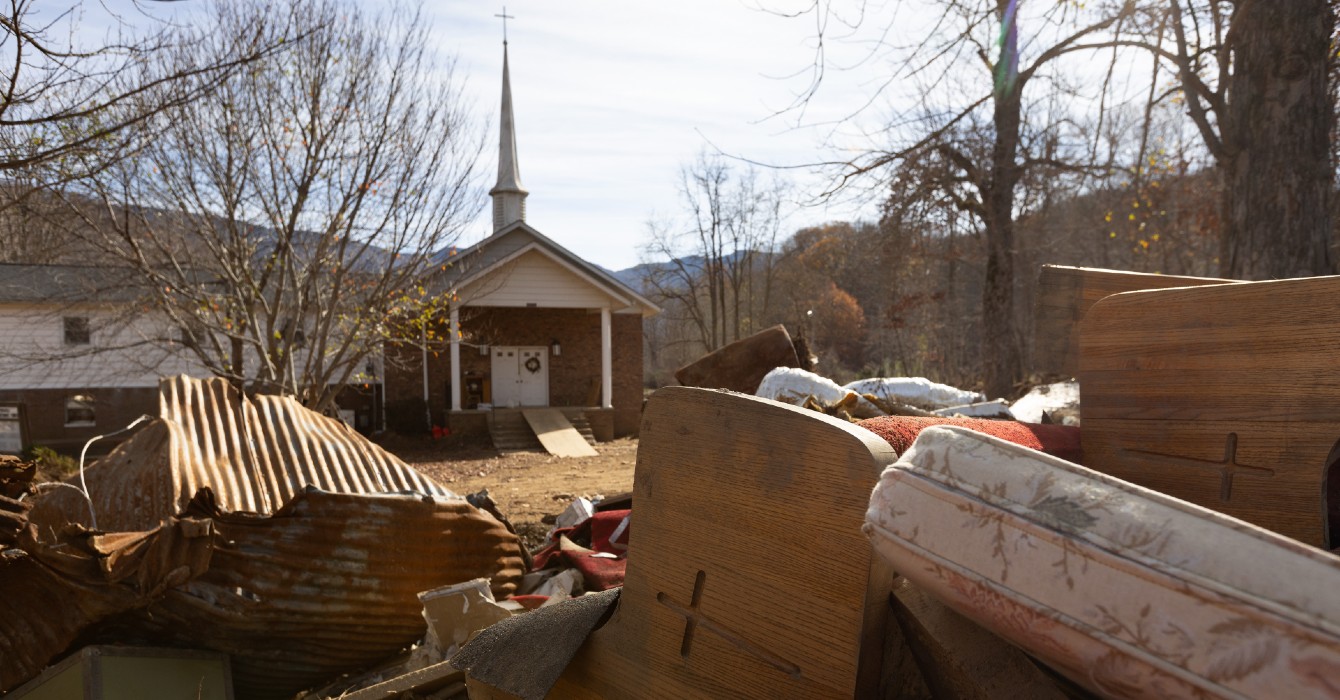The task for bread bakers is learning to read the needs of dough. Is it thirsty? Is it cold? Is it tired? Has it rested too long? The signs are subtle, but understanding becomes intuitive after shaping hundreds, if not thousands, of loaves. Bakers can see, smell and feel the needs without even thinking about it.
The relationship between baker and dough is not unlike that between pastor and congregation. A good pastor pays attention to the temperature of the church and responds accordingly, adjusting the sermon or the ministry offerings to meet the needs of the congregation in its current season.
Over the last eight years, though, I’ve heard from many pastors who are at something of a loss. They sense growing tension within their communities — tension born of political and cultural disagreements — and they don’t know how to respond. Their communities are exhausted, some are dwindling, and these clergypeople aren’t sure what to do next.
My foray into the world of food and faith began with research on churches that eat together. I studied the ways conversation around the table builds resilience in communities and defuses the tension of hard conversations. I still believe wholeheartedly in the efficacy of this method, but when leaders come to me looking for advice on how to facilitate these kinds of conversations, I surprise them. I tell them that they should start by baking bread.
You must learn to become comfortable with tension in order to bake bread. Tension is the backbone of bread. The structure of a loaf is possible thanks to the development of gluten, a network of proteins made up of glutenin and gliadin. Glutenin and gliadin have two opposing characteristics. One is elastic; it wants to stretch and stretch and stretch. The other is plastic; it wants to hold its shape.
When the proteins collide, they form bonds with one another, and the tension between the opposing characteristics allows the dough to grow while holding its shape. This is what gives us beautiful round loaves with a crusty ear curling at the top. It’s what enables a baguette to become so long and thin without collapsing. It’s what provides the fluffiness to a loaf of sandwich bread.
But building gluten tension requires careful attention to the needs of the dough — specifically, its need for rest. Tension must be built slowly, allowing the dough to relax and recover between each step. If it’s pushed too far too soon, the proteins will tear and create a mess on the counter. Carefully building this tension, however, results in a dough so strong it can lift the lid right off its container while rising.
Like bread, our communities are strengthened through the tension of opposing characteristics — our different experiences, convictions and needs. These differences naturally lead to disagreements, to varied longings and fears in response to cultural and political change. In order for the tension to build strength, a leader, like a baker, must pay attention to when the community is ready to engage their differences and disagreements so they can learn from one another … and also to when they need time to rest, recover and process what they’ve heard.
This practice of slowly building tension is a subtle dance that grates against the narratives perpetuated online, where we are tempted to view disagreements in terms of punchy one-liners and memes that reveal the absurdity of the other side. Behind so many of our divisions lie a layer of fear and a desire to belong. No matter how witty a quip, it cannot dissipate that fear or invite the other into the fold.
The table is a natural place for us to balance this relationship between tension and rest. When we gather together over soup and bread or a giant potluck spread, we become more open to sharing our own stories and hearing the stories of those eating with us. The experience is not always comfortable, but under the care of a wise leader, the discomfort can be good. At the table, we are invited, at times, to lean into tension and, at times, to lean into rest.
Guiding a congregation through this rhythm is a tender and holy job. As our churches navigate these differences, how beautiful is it that this bread that embodies the balance of tension and rest is the very gift God gives us to remind us of our unity in Christ?
If you are weary and unsure how to lead through this season, I hope that you will begin by pulling out a bag of flour and a mixing bowl. Stir together the flour, water and yeast, breathing slowly and deeply as you feel the elements transform.
Pray that just as the yeast fills this dough with life — captured in the tension between each gluten strand — the Holy Spirit will breathe life into the community in your charge.
When the loaf is done, smear a slice with butter and share another with a friend. When you’re ready, maybe even share a piece with that congregant who is a struggle — believing that in some mysterious way, bread can bind us together.























